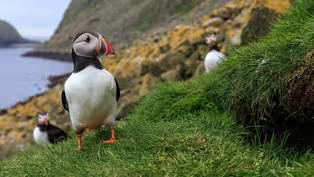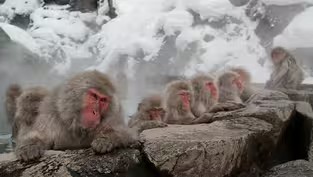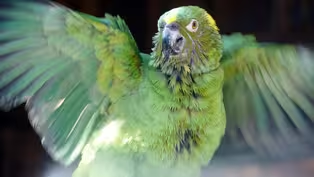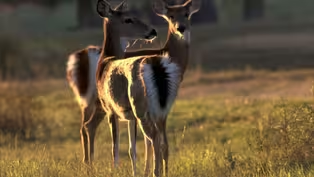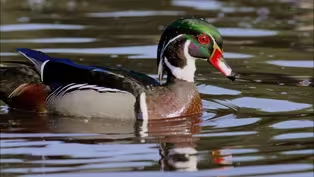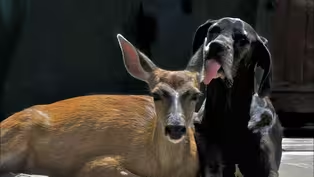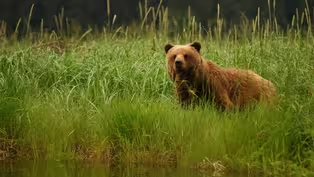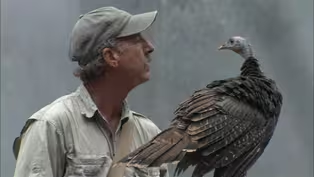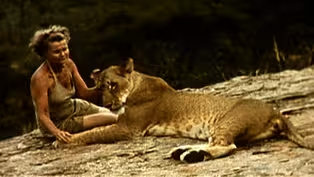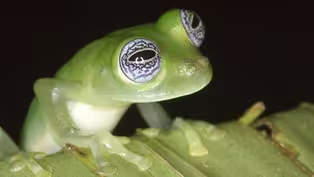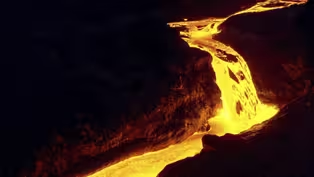
The Colorado
Season 9 Episode 14 | 56m 34sVideo has Closed Captions
River from Rockies to near Sea of Cortez
Eagles, pumas, sandhill cranes and other creatures seek sustenance from the Colorado River and its environs.
Problems playing video? | Closed Captioning Feedback
Problems playing video? | Closed Captioning Feedback
Major support for NATURE is provided by The Arnhold Family in memory of Henry and Clarisse Arnhold, Sue and Edgar Wachenheim III, The Fairweather Foundation, Charles Rosenblum, Kathy Chiao and...

The Colorado
Season 9 Episode 14 | 56m 34sVideo has Closed Captions
Eagles, pumas, sandhill cranes and other creatures seek sustenance from the Colorado River and its environs.
Problems playing video? | Closed Captioning Feedback
How to Watch Nature
Nature is available to stream on pbs.org and the free PBS App, available on iPhone, Apple TV, Android TV, Android smartphones, Amazon Fire TV, Amazon Fire Tablet, Roku, Samsung Smart TV, and Vizio.
Buy Now
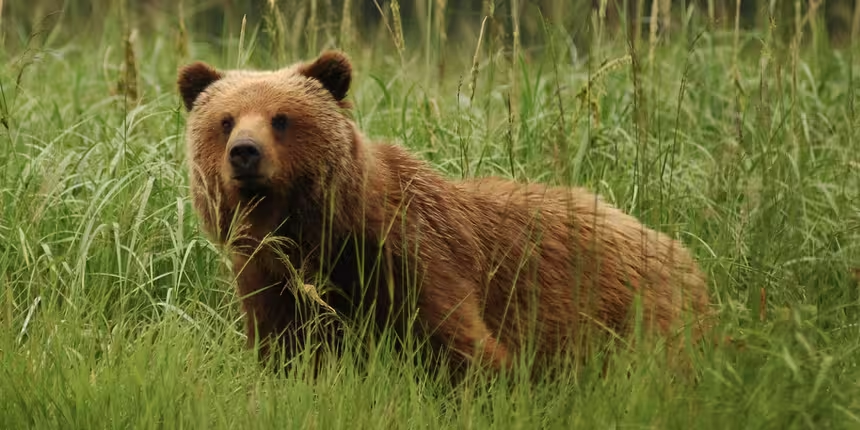
Explore More Ways to Watch
Bring the beauty and wonders of wildlife and natural history into your home with classic NATURE episodes.Providing Support for PBS.org
Learn Moreabout PBS online sponsorshipMore from This Collection
Watch classic NATURE episodes with the PBS station member benefit Passport.
Video has Closed Captions
Animals congregate in huge colonies partly out of necessity and partly for the security. (52m 55s)
Video has Closed Captions
Follow a troop of snow monkeys in Japan to see how they prepare to face the world. (52m 58s)
Video has Closed Captions
Parrots and the bittersweet world they share with humans. (53m 10s)
Video has Closed Captions
Learning about one of our closest neighbors: the white-tailed deer. (53m 10s)
Video has Closed Captions
Take a fascinating look at one of our most familiar birds. (1h 42s)
Video has Closed Captions
Love apparently knows no boundaries in the animal kingdom. (53m 20s)
Video has Closed Captions
Enter a world shaped by bears, trees, and salmon. (50m 9s)
Video has Closed Captions
One man's remarkable experience of raising a group of wild turkey hatchlings to adulthood. (58m 51s)
Elsa's Legacy: The Born Free Story
Video has Closed Captions
The true story that inspired "Born Free". (53m 10s)
Video has Closed Captions
It is the greatest mass extinction since the dinosaurs. (53m 43s)
Video has Closed Captions
Kilauea, on Hawaii's Big Island, is the world's most active volcano. (54m 6s)
Video has Closed Captions
Relationships with cats and dogs are some of the longest and most intimate of our lives. (53m 30s)
Providing Support for PBS.org
Learn Moreabout PBS online sponsorship[wolf howling] [wondrous music] [calf calling] [horse neighing] [avocets chirping] [wondrous music] [wondrous music continues] [ethereal music] [ethereal music continues] [ethereal music continues] - It is the sculptor of life in our American Southwest, carving out landscapes of almost unearthly beauty, where the first Americans lived for centuries and drank deep from it.
It brings life to places that otherwise would know only the sigh of desert winds.
It is the Colorado River.
Hi, I'm George Page.
For millions of years, the Colorado has been artist-in-residence here in the Canyonlands of Utah.
All along its almost 1,500-mile journey from its snowy birth in the Rocky Mountains to its salty demise in the Sonora Desert, it is a river of life.
The famous water wars of the American West are all about this river: Who gets to drink from it, and who does not?
Harnessed by dams and diverted by canals almost from its source, the Colorado and its tributaries now provide water to over half the human population of our American West.
So much water is drawn off that today, this great river disappears into the sand before it reaches its delta at the Sea of Cortez.
And yet the Colorado still supports a great diversity of wildlife along its course.
Our film by Wolfgang Bayer looks at this natural wealth and whether or not we can keep it.
[wondrous music] The Rocky Mountains steal the snows from the cold winds that howl across the Continental Divide.
This is the cradle of the Colorado.
[wondrous music] Here in its frozen state, the great river still remains pure, pristine, and undefiled.
[wondrous music] Winter in this realm severely tests the toughest of wild creatures.
In bitter weather, the bighorn sheep descend from the icy heights to forage where they can on dry mountain grasses.
[wind howling] Biting storms may briefly sweep a grassy meadow free of snow.
But soon, winter lays its heavy mantle on the land and all must struggle to find food.
[wind howling] The resourceful elk graze beneath the snow, along the margins of the mountain stream, which will become the Colorado River.
Free flowing and warm compared to the frozen land, the infant river is a winter oasis of life.
[wondrous music] [wondrous music continues] Ever moving, the river never freezes, and so it provides food and refuge through the coldest months for those who might otherwise perish.
[wondrous music] [wondrous music continues] In its long plunge to the Sea of Cortez, the Colorado will gather the waters of many rivers.
The main stem, known as the Green River, flows south from the Wind River Range of Wyoming, while 300 miles away, in the high Rockies of Colorado, a second major branch has its source.
Here in the aptly named Never Summer Mountains, snow cover remains throughout the year, and each fresh storm contributes to the water reserves of the Colorado.
[gentle orchestral music] Under a blanket of snow and ice, the great river is born.
It's a mere trickle at first, but when gorged with meltwater, it will in time grow into a mighty torrent.
[gentle orchestral music] Clear, cold, and sparkling, the river that will nourish the West surges to life.
[gentle orchestral music] [gentle orchestral music continues] Even here, near its source, diversions for human use sap the strength of the Colorado, but its vital powers remain.
[gentle orchestral music] In the golden sun of a winter's dawn, the river pauses on its journey to lend life to a snowbound mountain valley.
[gentle orchestral music] [swan honks] The trumpeter swan resides all year along the upper reaches of the river.
And in its icy waters, the muskrat finds both sustenance and shelter.
The American dipper is another permanent resident, a bird wedded to the water by its peculiar way of life.
Waterproofed against the cold and wet even in mid-winter, it manages to pluck grubs and water bugs from the river.
The Canada goose also spends the winter months living on the river's bounty, fortified by a year-round supply of algae, roots, and grasses.
A Barrow's goldeneye displays for a prospective mate, perhaps a response to the break in the weather.
Where most ducks desert the mountains in this season, the goldeneyes find the river's resources to their liking and settle in for the duration.
Like the muskrat, the river otter has evolved a lifestyle that is totally dependent upon the river.
[river otter grunting] Apparently oblivious to the cold, the otters thrive in these frigid waters, warmed by their waterproof coats and sustained by a seemingly limitless larder of fish.
[tense orchestral music] In mid-winter, the valley of the Upper Colorado is a haven for the hunter and the hunted.
[tense orchestral music] Ever wary, hungry mule deer forsake the safety of the forest to forage by the river.
[tense orchestral music] To the deer, the river offers life.
But to reap its rewards, they run the risk of death.
[tense orchestral music] A sound, a sudden footfall on the rocks, and the killer's edge, the element of surprise, is lost.
Heavy snow dashes any hope of hot pursuit.
But winter, in its heartless way, provides its own gift for the luckless and the famished.
[paws thudding] [paws thudding continues] Even when hungry, the cougar is cautious.
Keen nostrils test the carcass to confirm that it's fresh.
Then with canny deliberation, the cat covers the cache with grass, a strategy to protect its prize from competitors.
[grass rustling] [crow cawing] The trials of winter take their toll of the aged and the unfit, but the hearty and the quick will survive to see the coming of the Rocky Mountains spring.
[uplifting orchestral music] [birds singing] [uplifting orchestral music] [uplifting orchestral music continues] [uplifting orchestral music continues] [birds chirping] With a watchful eye for trouble, a cow moose ventures from the river, and under her doting care, her calf discovers a new world to explore.
[wolf howling] [wolf howling continues] [wind roaring] Furry coyote pups survey a curious world into which they were born a mere five weeks before.
[pups whimpering] [pups whimpering continues] [calves calling] Now following the river valley, the elk ascend to the mountain meadows where they will graze throughout the summer, on pastures made newly green by the melting snows.
[calves calling] [ominous music] This is the domain of the golden eagle, monarch of the skies, wild symbol of the high, windswept spaces where it searches for its prey.
[ominous music] The bogs and marshes below these mountain peaks are natural storage banks that catch and hold the runoff from the winter snows.
And through the days of summer, the water in these reservoirs will guard the land from drought.
[wondrous music] Along the quiet tributaries of the river, the handiwork of one of nature's most accomplished engineers is evident everywhere.
[wondrous music] Next to man, the beaver has done more to alter the face of the land than any other animal.
By damming streams, the beaver builds ponds, which not only provide for its own kind, but offer a place for others, like the trumpeter swan, to live and rear their young.
[swan honks] For the moose, the pond is a salad bowl: For here it finds its favorite foods, succulent aquatic plants growing in profusion.
[crane calling] And to the sandhill crane, the marshes that border the pond make an ideal place to feed and raise a family.
[crane calling] [crane calling] Concerned for the safety of its own nest nearby, the red-winged blackbird swoops to the attack.
[crane calling] [crane calling continues] [crane calling continues] [crane calling continues] In pursuit of the beaver's pelt, fur trappers once prowled the length of the Colorado, severely depleting the species.
Today, its numbers are slowly on the rise, and the mark of the busy architect of the West may again be seen on the land.
Now swollen by the waters of its countless tributaries, the stream assumes the stature of a stately river, rolling relentlessly toward the sea.
Every spring, the cutthroat trout pit their lives against the rapids.
[river roaring] Full of minerals, nutrients, and dissolved oxygen, these waters now teem with trout, driven on by the irrepressible urge to spawn in the streams where they were hatched.
[water gurgling] Soon a new generation of cutthroat fry will swarm in the shallow, gravelly waters of the Upper Colorado.
The hatchlings will grow fast, fattened on a rich diet of drifting plankton, and by autumn, they will be ready to follow the Colorado downstream.
[eagle squealing] The bald eagle is keenly aware of the river's natural resources.
A pair of these once-common birds stakes its claim to a prime trout fishing locale.
They rear their gangly chicks within easy reach of this pantry.
From its lofty nest, the young eagle looks down on its wide, green world, while the river moves on toward its destination more than 1,000 miles away.
[upbeat music] Winding south from the mountains, the two arms of the river cut a swath through the high Colorado Plateau.
[perky music] Here in the 1850s, homesteaders and empire builders pursuing dreams of a promised land first gazed upon the Colorado.
[perky music] The river they saw wound gently through broad, open valleys, good land for agriculture as legions of Mormon settlers would in time discover.
[perky music] [wondrous music] Though the river's might is muted here, it is still a mecca for life.
[avocets chirping] A natural flyway, the Colorado will guide birds like these avocets on their journey north.
While the lands brushed by the river are carved in green, beyond its banks sprawls another realm, dusty, dry, and golden.
This is the high sagebrush country of Eastern Utah, where standing water is scarce.
[bird chirping] Here the sturdy sage dominates the landscape.
Drought and heat place severe restrictions on the ability of wildlife to survive.
The pronghorn benefits by browsing on moisture-rich vegetation, a drought defense which also works for the white-tailed jackrabbit.
[birds chirping] But water remains the staple of life for all living things that make their home on the parched Colorado Plateau.
[horse neighs] Herds of wild mustangs, descended from domestic stock brought by the Spanish, vie for control of the few water holes in this sun-scorched land.
[horse neighs] Skittish and suspicious of people, the mustangs maintain their freedom by staying on the move.
[peaceful music] 700 miles south of its source, the Green River joins forces with the Upper Colorado.
[peaceful music] Fortified by the union of its two strong arms and bearing a cargo of silt swept down by seasonal floods, the Colorado moves on, now a force to be reckoned with.
[river roaring] [river roaring continues] [river roaring continues] The river's power grows with each mile, and armed with biting sand and silt, it carves a course through walls of solid rock.
For 10 million years, while the plateau around it rose, the river has slowly worn away the land.
[river roaring] For 200 torturous miles from Utah in the north to Arizona in the south, it slices a swath through a maze of magnificent canyons, carrying with it the sediments and seeds which nourish life along the water's edge.
[gentle sweet music] [gentle sweet music continues] In full flood, the Colorado used to carry more silt than any river on earth.
This went to build the broad sandbars, which once hosted dense thickets of cottonwoods, willows, and other trees.
These groves were the heart of the Harris hawk.
But as the river shrank and the groves began to disappear, its range contracted drastically.
Yet, where lush woods remain, the solitary vireo still builds her nest, and the mule deer finds refuge.
The riches of the river have long been a lure to people.
High above the Colorado, the cliff dwellings of the Anasazi testify to hundreds of years of advanced civilization.
In these caves, the early Indians stored the grain they grew in irrigated fields below.
Nearby, the canyon walls preserve a vivid record of their lives: [wistful tribal music] The game they hunted, the weapons they used, the gods they worshiped.
[wistful tribal music] In time, leached of nutrients by years of irrigation, the soils which supported the Anasazi gave out, and the Indians abandoned the canyons, leaving the river to roll on its way, alone in its solitude and splendor.
[wondrous music] [wondrous music continues] This is a land of little rain, of burning sun, and bone-dry winds, and remarkable strategies are needed to survive here from one rainfall to the next.
[thunder roaring] When infrequent storms do bring rain to the high plateau, a seemingly miraculous event occurs in the sun-baked rocks.
[raindrops plopping] Though years may pass before summer showers fill these freshwater pools, almost at once, in the wake of the storm, new life swarms in these waters.
[raindrops hissing] Suddenly, thousands of fairy shrimp hatch from eggs that have lain dormant for years.
Within a week, they will reach adulthood, produce new eggs, and die.
The tadpole shrimp follows a similar routine, living its life in a hurry.
[raindrops hissing] For the busy shrimp, there's barely enough time to feed and spawn before the desert sun once again bakes its world to a crisp.
The fossils found in these rocks speak of longer cycles of wet and dry, recalling a time when subtropic seas washed across the land, which is now the Grand Canyon.
Like the pools of summer, the seas are now long gone, and the life they knew has gone with them.
[beautiful desolate music] But change is the only constant in this land, and everywhere the creative hands of water and weather are tirelessly at work.
[beautiful desolate music] [beautiful desolate music continues] [beautiful desolate music continues] [beautiful desolate music continues] The dipper is at home here, finding food wherever there's water.
And wisely, it builds its nest where few predators will follow.
[chicks chirping] [wistful piano music] A swallowtail butterfly pauses on a sandbar to sip up salts and nutrients, while the river otter hunts its supper in the bountiful Colorado waters.
[wistful piano music] [wistful piano music continues] [wistful piano music continues] In its capacity to nourish, refresh, and restore, the Colorado is truly a river of life.
[river roaring] And more than any structures man has made on the planet, the canyons the Colorado has carved are works of stunning grandeur: Ramparts, towers, and mystic temples hewn of golden stone.
[wondrous music] [wondrous music continues] As the river glides southward, it descends through six distinct climate zones, each with its own community of creatures.
[insects calling] Chuckwallas belong to the hottest zone, where they cower in the shade, while the collared lizard braves the scorching rocks, and the desert iguana prudently protects its sensitive toes.
The pink rattler, found only in the canyons, is colored to match the sandstone rocks on which it prowls.
[insects calling] The desert bighorn is another resident well-suited to the rigors of life within this arid land.
[water gurgling] But when the bighorns drink, they are most vulnerable to danger.
[hooves thumping] Like many predators, the cougar fails in most of its attempts to bring down prey.
But while it may wait to eat, in this hot climate, it rarely passes up a chance to drink.
[insects calling] [insects calling continues] [wind roaring] [bird chirping] [wind roaring] With each thousand feet the traveler climbs above the canyon floor, the air temperature falls by an average of four degrees, until a mile above the river, on the edge of the Grand Canyon, the climate resembles that of the Wyoming Rockies.
[wind roaring] Here on the high north rim, a forest of cool Ponderosa pines replaces the burning desert far below.
[bird singing] This forest hosts the world's entire population of the elusive Kaibab squirrel, which feeds exclusively on the twigs and cones of the Ponderosa pine.
[bird screeching] With its silver white tail and red striped back, the Kaibab squirrel is a standout.
But a mere 10 miles away, as the eagle flies, lives a close relation.
On the south rim of the canyon, the less ostentatious Abert's squirrel follows a lifestyle very much like its kin.
[crow cawing] At least 20,000 years have passed since the two squirrels diverged, a testament to the power of the river as a shaper of life and land.
[gentle music] One of the great natural wonders of the earth, the Grand Canyon has many moves and wears ever-changing faces.
[gentle music] [gentle music continues] [gentle music continues] [ominous music] In 1540, inspired by tales of riches, an expedition under Vazquez de Coronado reached the south rim of the canyon.
In horror, the Spaniards withdrew, dismissing this land as an arid hell, useless to God or to man.
[ominous music] Others came later seeking souls to save, but all fell back from the yawning abyss, one of the most awesome obstacles men had ever confronted.
[ominous music] It was left to John Wesley Powell, a civil war major, to conquer the canyon in 1869.
Against all odds, he hoped the river might prove a practical highway for commerce.
[somber music] That hope was dashed in his hair-raising ride through the rapids, but it was in the chasm that he found, in his words, "a sublimity never again to be equaled this side of paradise."
[gentle music] Wealth of a more worldly kind in time brought gold prospectors to the canyon.
And the boroughs they set free still roam the rim, hardy survivors, long after the frontier era.
[gentle uplifting music] [gentle uplifting music continues] [sheep bleating] Many animals and people claim a share of the Colorado's waters.
One of the oldest claims belongs to the Navajo, heirs to the arid lands abandoned by the Anasazi.
[sheep bleating] The San Juan River, a tributary of the Colorado, is vital to the Navajo herds.
[sheep bleating] [sheep bleating continues] Today, land which the Anasazi overfarmed is overgrazed by the Navajo.
And survival here on the edge of the Colorado turns on the availability of that single precious commodity: Water.
To quench a far larger thirst, Hoover Dam was built below the Grand Canyon.
[majestic music] [dynamite exploding] Completed in the depression year of 1935, the dam was a proud monument to a nation's triumph over the forces of nature.
[gentle music] [triumphant music] Behind the dam, Lake Mead, 110 miles long, captured the Colorado's waters, or at least according to an agreement among seven Western states and Mexico.
[wondrous music] The wild river had been tamed and made a servant to human needs.
And what was once a desert canyon, fish, introduced to supply sport for anglers, are now gorged upon by cormorants.
[cormorants calling] The age-old balance of life along the Colorado has been precariously tipped.
The Colorado squaw fish, one of 13 species of fish native to the river, is no longer found below the dam, which blocked access to its spawning grounds upstream.
Changes in stream flow and water temperature have also threatened another native species: the distinctive humpback chub.
By drawing cold water from the bottom of the reservoir and releasing it on demand downstream, the dam has radically altered the river.
Power generated by the water that spills through Hoover Dam feeds into a grid that keeps the lights burning and the air conditioners humming 24 hours a day in the year-round boomtown of Las Vegas.
[people chattering] But Nevada is not the dam's sole beneficiary.
14 million people in Phoenix, Tucson, and Los Angeles are dependent on the Colorado for power and water.
No river in the world is more heavily used than the Colorado, with much of its wealth diverted for agriculture.
But this use is costly, for salts dissolved from the fields and returned to the river slowly poison its waters.
Much of the produce grown along the river is highly water consumptive, requiring intensive irrigation to yield a commercial crop.
[machine whirring] Yet the lion's share of the water, a full 90%, is used to grow hay for livestock, draining the river to satisfy only 4% of the national market for beef.
[cow mooing] That hunger for water led to the construction of a second major dam 350 miles upstream from the Hoover, just above Grand Canyon.
The Grand Canyon Dam, completed in 1964, was to fuel a burst of prosperity in the West.
But a scenic canyon nearly 200 miles in length was drowned behind the dam.
[wondrous music] With almost 2,000 miles of shoreline, the mammoth reservoir christens Lake Powell, dwarfs most other artifacts made by man on earth.
The great lake is clearly visible from satellites in space.
Now federal officials could boast that it was possible to control the flow of the Colorado like the water from a garden hose.
[river roars] A wilderness no more, the Grand Canyon now qualifies as a prime recreation area, attracting 3 million visitors in an average year.
[rafters cheering] [river roars] Today, there's little that remains truly wild within the Grand Canyon, and with 15,000 tourists making the run downriver each year, serious concerns have surfaced about the effects of overuse.
[recreationists chattering] With floods a thing of the past and its flow reduced to a fifth of its former level, the river now runs to a different rhythm, and life along the stream has changed with the times.
Banks, which once were scoured by seasonal floods, have been colonized by the tamarisk, a fast-spreading tree from the Middle East, introduced to the West a century ago to stabilize river banks.
The spread of the tamarisk is watched with worry.
Where wild woodlands now flourish where none existed, the trees may discourage native birds and animals, which belong to the old streamside community.
[gentle music] But few of these changes are apparent as yet to those who journey downriver.
And in its physical features at least, the Grand Canyon remains a place of unsurpassed splendor.
[gentle music] [gentle music continues] [gentle music continues] South of the canyons, the Colorado glides on.
And though its flow is diminished by the dams and diversions upstream, it still has the power to replenish the land through which it passes.
[insects calling] In Arizona, on the edge of the Sonora Desert, a sprawling marsh steeps in the river's waters, a refuge from the heat and dust, cool and green, and brimming with life.
[birds calling] Ironically, the vibrant life of the marsh owes its existence to the Parker Dam downstream, which flooded this desert valley.
[bird calling] [gentle desolate music] But up on the dry banks only a few yards from the river is a different world.
[gentle desolate music] Fuzzy forests of jumping cholla thrive here on a ration of less than three inches of rain a year.
[gentle desolate music] And the stands of giant saguaro give lie to the notion that the desert is barren and devoid of life.
[gentle desolate music] [gentle desolate music continues] In this desert land, water is the elixir of life, as vital to the coyote and the hornet as it is to the white-winged dove and the Gambel's quail.
[bird calling] [insects buzzing] [gentle desolate music] Until recently, this arid wonderland was left untouched, a place deemed fit for a few crusty creatures, but for little else.
But change has come to the Sonora Desert and to the river which cuts it in half.
[cows mooing] Cattle now overgraze the fragile land and guzzle at the water hose where desert creatures drank.
[cows mooing] But these changes pale compared to those which are in store.
[machines whirring] The Central Arizona Project, now nearing completion, has called for the construction of a colossal aqueduct to carry water from the Colorado River more than 200 miles across the desert to Phoenix and Tucson.
[machine beeping] While Arizona may benefit from the boom, across the Parker Dam, there's widespread fear that soon, when Arizona begins drawing its full share of water, the tap will turn off on the cities and farms of Southern California.
[ominous music] [engine whirring] On Lake Havasu, meanwhile, the reservoir behind the dam, a bustling community has sprung up overnight, complete with its own nod to another great river in the form of the original London Bridge, brought here stone by stone.
[gentle uplifting music] [whimsical upbeat music] At times more of a swimming hole than a river, the Colorado endures hoards of weekend visitors who come to wallow in its waters.
[visitors chattering] The cost is high to the river's pride.
Below Parker Dam, the river, now confined to a graded ditch, waters the crops which have made California's Imperial Valley the winter garden for the nation.
[insects buzzing] Herbert Hoover once said, "Every drop of water that runs to the sea without serving a commercial use is a public waste."
Today, every drop of the Colorado's water is used at least three times before it's returned, polluted with salt and fertilizers, to the river.
[somber dissonant music] At last, with most of its vigor spent, the great Colorado reaches Yuma, Arizona and the international fence of Mexico.
[somber dissonant music] Without fanfare or farewell, its sullied waters slip across the border.
Then, farther on, they spill into a soggy marsh, the last gasp of the dying river.
Here, the endangered Yuma clapper rail still hides, while wood storks probe in mud heavily laced with salt, the poisoned cargo contributed by the runoff of countless irrigated fields along the river's course.
[river murmuring] [river murmuring continues] In this hottest quarter of the continent, species have evolved which take the harsh conditions in their stride.
The desert pupfish is one of these, found only here at the end of the Colorado.
Though renowned for its resistance to heat and salt, the tiny fish has been pushed to the brink by competition from introduced fish and by the draining of its last wild retreats.
In 1922, Naturalist Aldo Leopold described this region as a place of green lagoons, lovely groves, and awesome jungles, where the jaguar still prowled.
[gentle nostalgic music] But all of that is no more.
75 miles south of the border, exhausted from all of its labors, the Colorado concludes its journey in the sand, just short of its goal.
[gentle nostalgic music] The great, wild river has been rung dry.
[gentle nostalgic music] Beyond, the destination that the river never reaches: The Sea of Cortez.
[gentle nostalgic music] Though the once mighty Colorado River no longer reaches the sea, along its way, it has worked wonders, supporting the development of the Great Southwest and supplying recreation to millions.
[gentle music] [rafters cheering] But as Aldo Leopold said, "There are some who can live without wild things, and some who cannot."
Like winds and sunsets, wild things were taken for granted until progress began to do away with them.
"Now," said Leopold, "We face the question of whether a still higher standard of living is worth its cost in things natural, wild, and free."
[bittersweet melancholic music] [bittersweet melancholic music continues] [bittersweet melancholic music continues] [gentle orchestral music] [gentle orchestral music continues] [gentle orchestral music continues] [gentle orchestral music continues] [gentle orchestral music continues] [water gurgling] [bright music]

- Science and Nature

Explore scientific discoveries on television's most acclaimed science documentary series.













Support for PBS provided by:
Major support for NATURE is provided by The Arnhold Family in memory of Henry and Clarisse Arnhold, Sue and Edgar Wachenheim III, The Fairweather Foundation, Charles Rosenblum, Kathy Chiao and...
